The Qutang Gorge (also sometimes called Kui Gorge) is the final of the Three Gorges. It is only 5 miles long and takes a mere 15 minutes to cruise through. It is considered the most magnificent of the gorges.
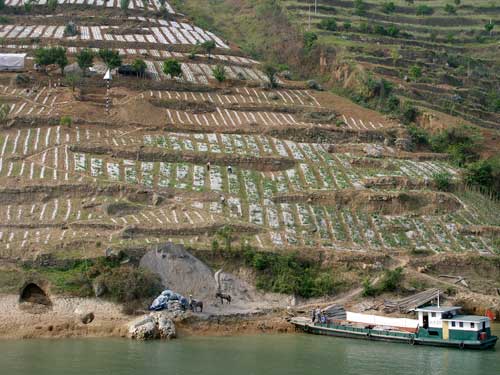
Farmers cover their young crops to protect them.
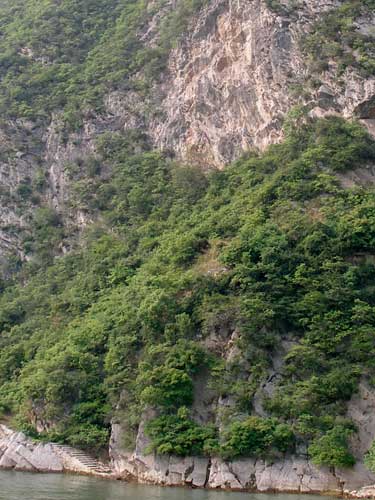
Steps carved out of the rock serve as a place to access the steep cliffs.
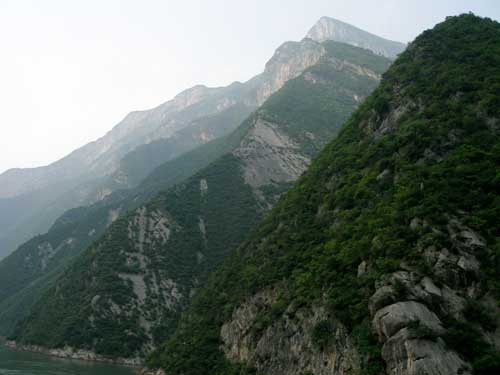
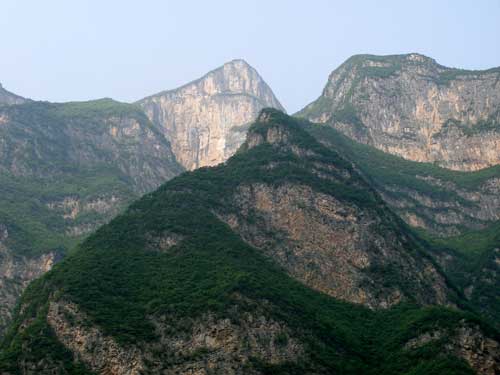
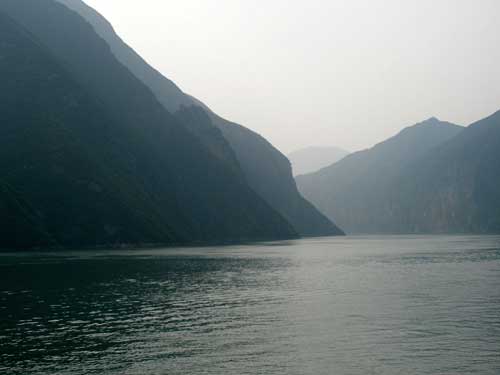
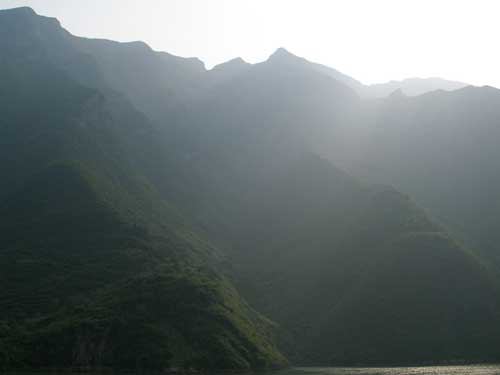
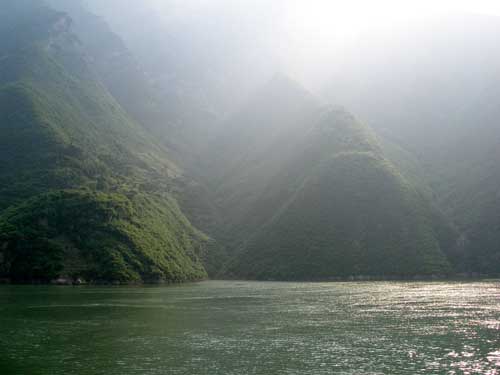
Light plays with the hills.
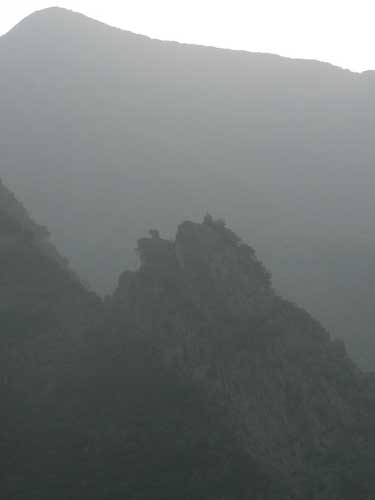
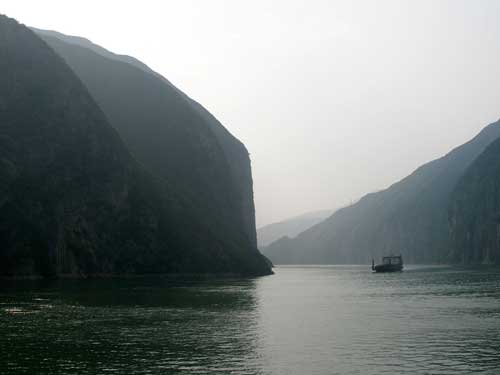
At Dragon Gate (or Kuimen) the river suddenly narrows to a width of about 330 feet. It is therefore known as the 'throat' between Sichuan and Hubei Provinces.
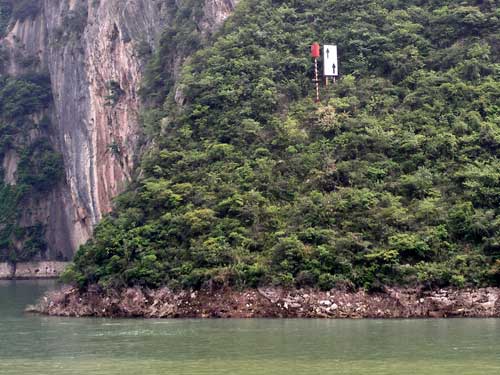
A priority sign indicates who has the right of way through the turbulent, narrow passage.
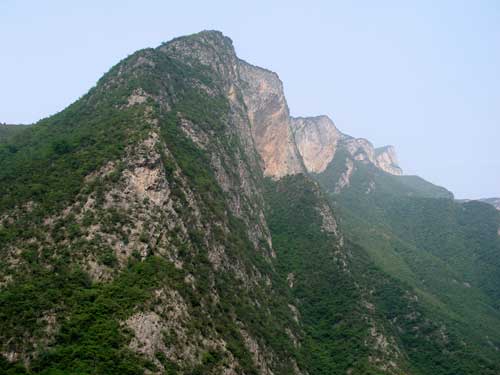
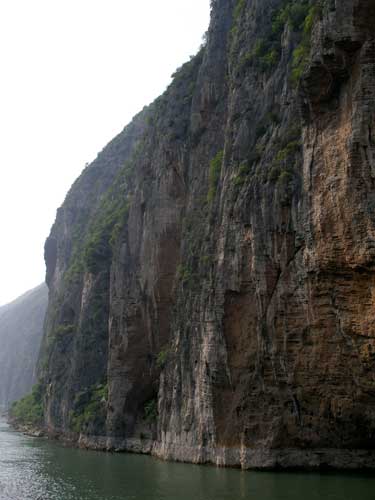
Sheer cliffs line the way.

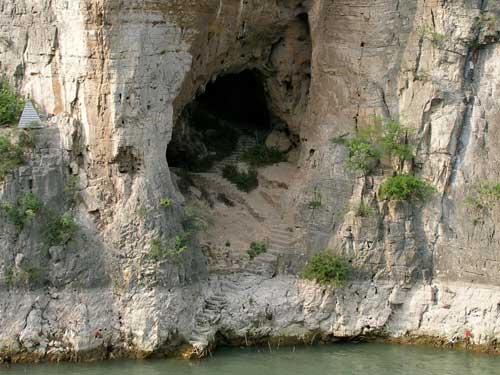
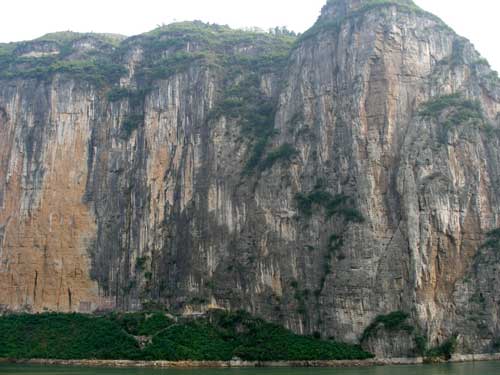
White Salt Mountain (Baiyan Shan) is home to the Chalk Wall, which contains numerous carved inscriptions (lower left, along where the cliff meets the green shrubbery).
The wall (Fen Bi Tang) is about 1/2 mile long with nearly 1,000 characters carved into it. The characters are carved in many different styles of calligraphy and in various sizes, with the largest being approximately 6 feet wide and the smallest being only the size of a finger. The oldest carving dates back to the Song Dynasty (960 - 1279). General Sun Yuanliang (1904 - 2007) carved: "Kuimen Pass is the most perilous passage in the world, but our boat lightly passed through." Due to the Three Gorges Project, some of the carvings have been moved to a higher place to avoid the rising water.
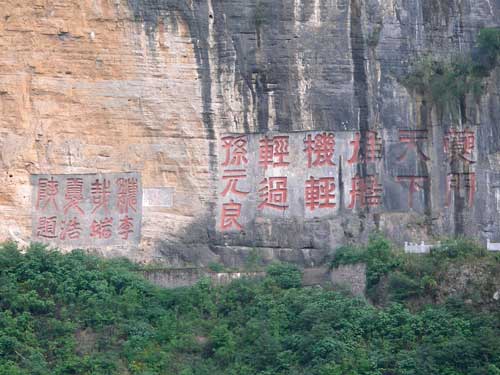
A closer view of some of the carvings
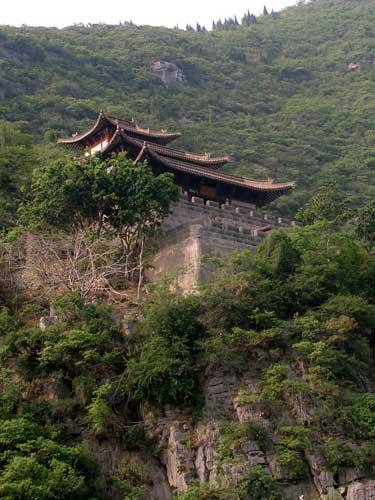
Baidicheng (or Baidi Temple) was an ancient city and also where Liu Bei, the first emperor of the Kingdom of Shu during the Three Kingdoms era (220 - 280), died.
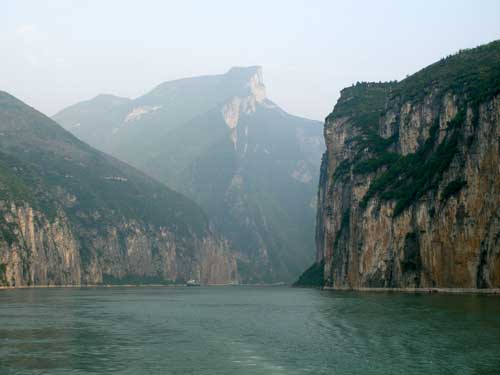
Looking back at the narrow Kuimen passage. Red Passage Mountain (Chijia Shan) soars above the horizon with 4,921 feet. White Salt Mountain is on the right.
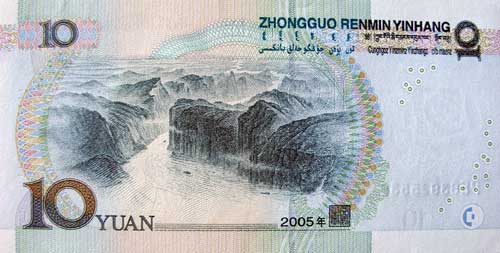
The scene is immortalized on the back of the Chinese 10 Yuan note.

